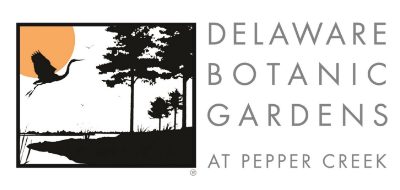Aster (symphyotichum) is September’s flower
- By Susu Fiske | Special to the Coastal Point

Fall is in the air — at least for the day I’m writing this, Friday, Sept. 1 — so we need to think about fall flowers to help the pollinators.
Asters are an exceptionally large group of perennials, with great nectar and fall color.
There are asters that do well in shade: white wood aster (aster divaricalus), blue wood aster (symphyotrichum cordifolium) and the large-leaved aster (aster macrophyllus). The white wood aster even does well in dry shade.
The sun loving asters are New England aster (symphyotrichon novae-angliae), (symphyotrichum oblongifolium) aromatic aster and New York aster (symphyotrichon novi-belgii). Bushy aster (aster dumosum) likes partial shade. Aromatic aster (symphyotrichum oblongifolium) “Raydon’s Favorite” proved itself to be one of Mt. Cuba’s most reliable performers and is stunningly beautiful, with profuse purplish-blue flowers that butterflies flock to for nectar in the fall.
Do not cut asters back, as the birds will enjoy their seeds!
These wonderful perennials do best in poor soils, so do not load them up with fertilizer (use the money you saved on more plants!). After the first year, you can let them be, as they do better when they are not micromanaged. You do not even need to mulch them. Do plant them in well-draining soil, as they do not like wet feet.
As different varieties grow to different heights be sure to check the plant label to get the size you need for your garden. If you pinch them back a few times before mid-July, you can control their height and width. This practice also causes them to flower later. Some of the asters’ lower leaves will dry out as they bloom. This is normal, but something to think about when planning your garden. You will want to plant something shorter in from of them, such as love grass, yarrow or fall annuals, like pansies.
Another great quality about the asters is they are drought-, deer- and rabbit-tolerant. They look great in masses and when used in meadow, native or wildflower gardens. Blooming until the first frost, they are a must-have for anyone trying to help the monarchs on their fall migration.
Fun facts:
• Aster, from the Greek word for star — which you can see in the shape of their flowers — symbolize love, luck and wisdom. Supposedly, the goddess Virgo was distraught about the lack of stars in the sky, and when she began to cry, her tears fell to earth and sprouted asters.
• Native Americans used wild asters in soups and teas, and as garnishes.
• They were also used on headaches, muscle aches and colds.
• Do not forget asters on your 20th wedding anniversary!
• Some believe that fairies sleep under the aster petals. Wouldn’t that be nice?
• Got negative energy? Burn some asters.
Wildlife benefits:
• Their late-blooming flowers are a great nectar support for important insects and pollinators, including the long-tongue bumblebee, golden northern bumblebee and monarch butterflies.
• Seeds are important winter food source for songbirds.
• Asters are host plants to many moth species, including checkerspot butterflies.
Companion Plants
• Achillea millefolium — yarrow
• Andropogon gerardii — big bluestem
• Asclepias incarnata — swamp milkweed
• Baptisia alba — white wild indigo
• Calamagrostis “Karl Foerster” — reed feather grass
• Carex cherokeensis — Cherokee sedge
• Chasmanthium latifolium — Sea oats
• Echinacea purpurea — coneflower
• Eragrostis spectabilis — love grass
• Eupatorium perfoliatum — boneset
• Eupatorium purpureum -Joe-pye weed
• Ferns
• Helenium autumnale — common sneezeweed
• Liatris spicata — blazing star
• Monarda fistulosa — wild bergamont
• Rudbeckia fulgida — black-eyed Susan
• Rudbeckia maxima — giant coneflower
• Rudbeckia subtomentosa — sweet coneflower
• Solidago speciosa — golden rod
• Sporobolus heterolepis — prairie dropseed
• Orange zinnias
• Hydrangeas
Read the article in the Coastal Point here.















